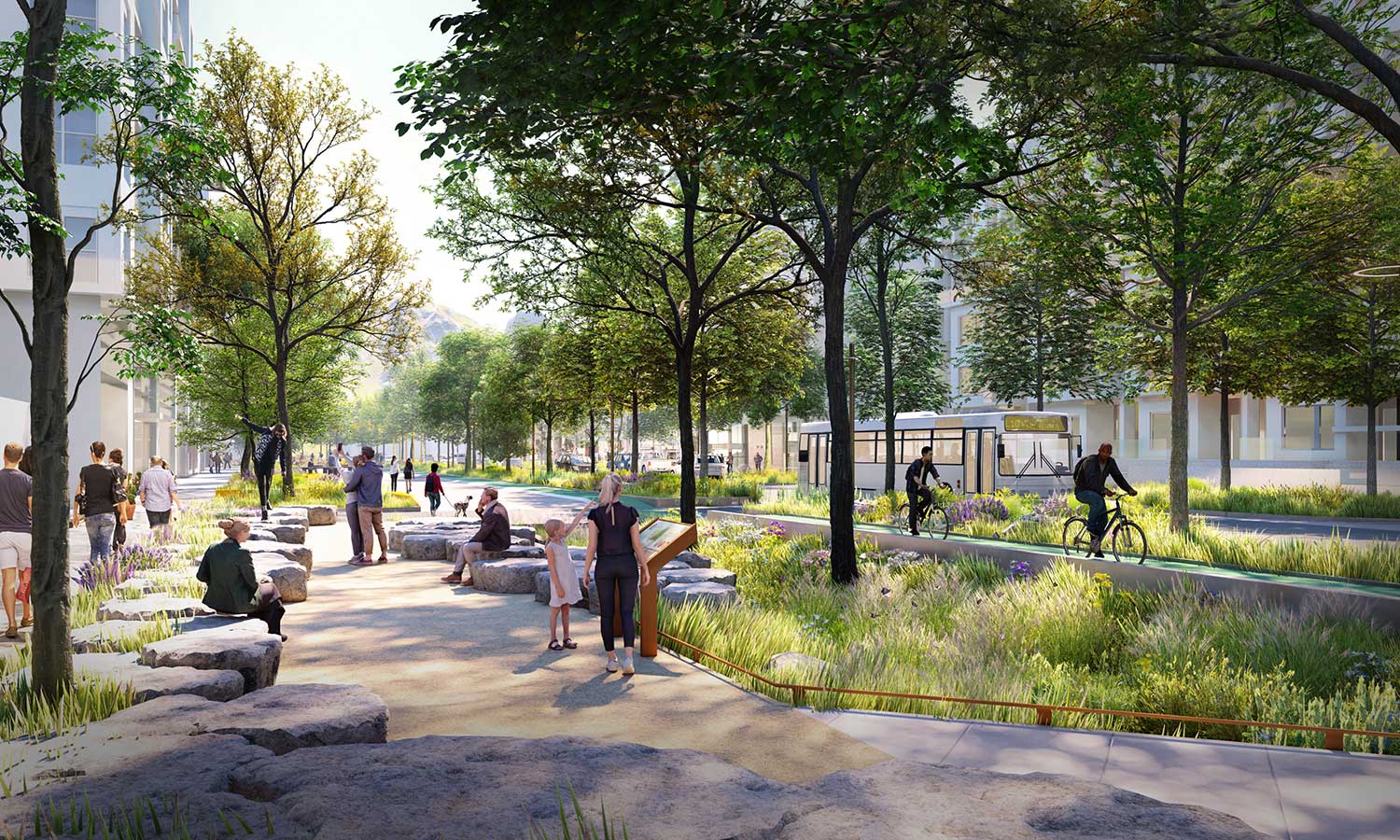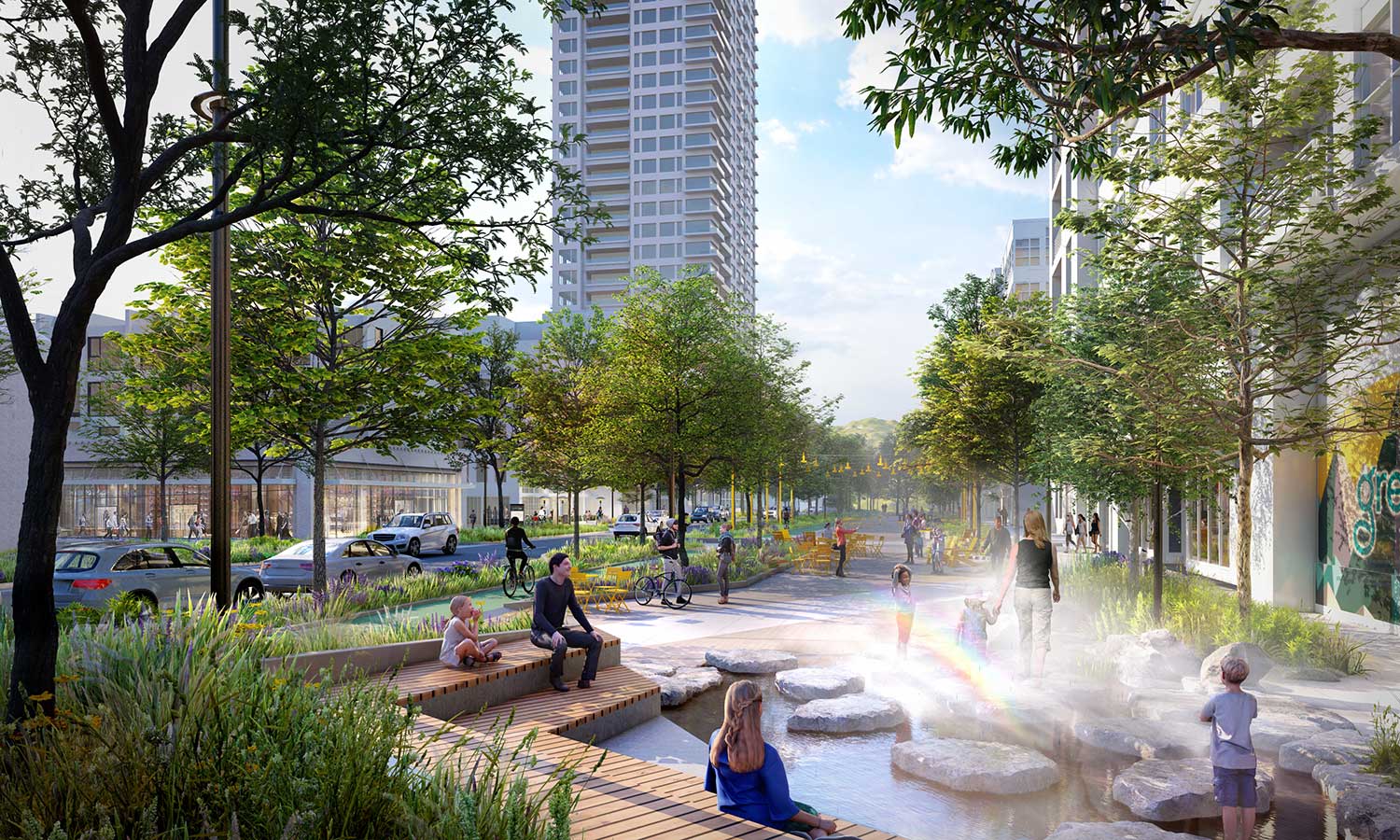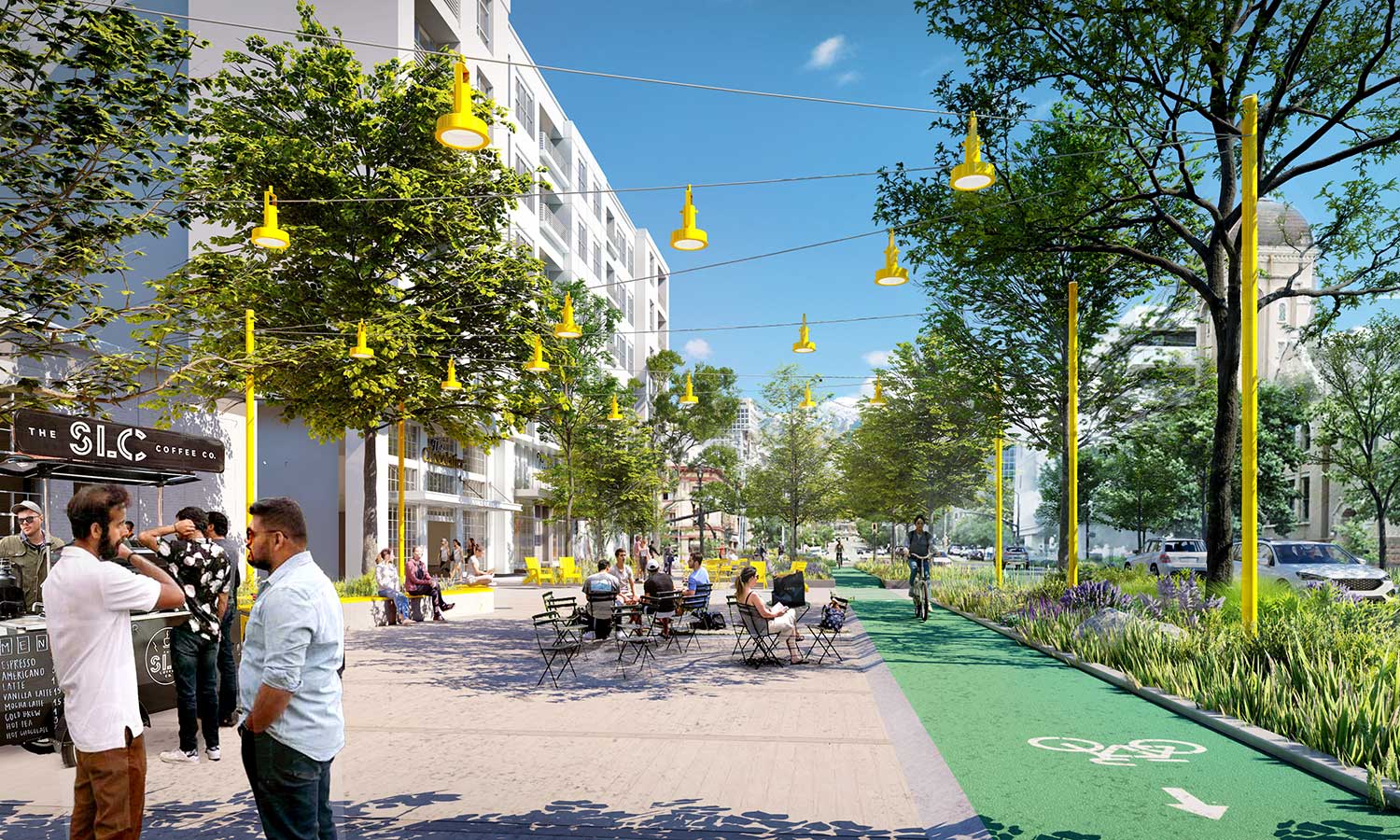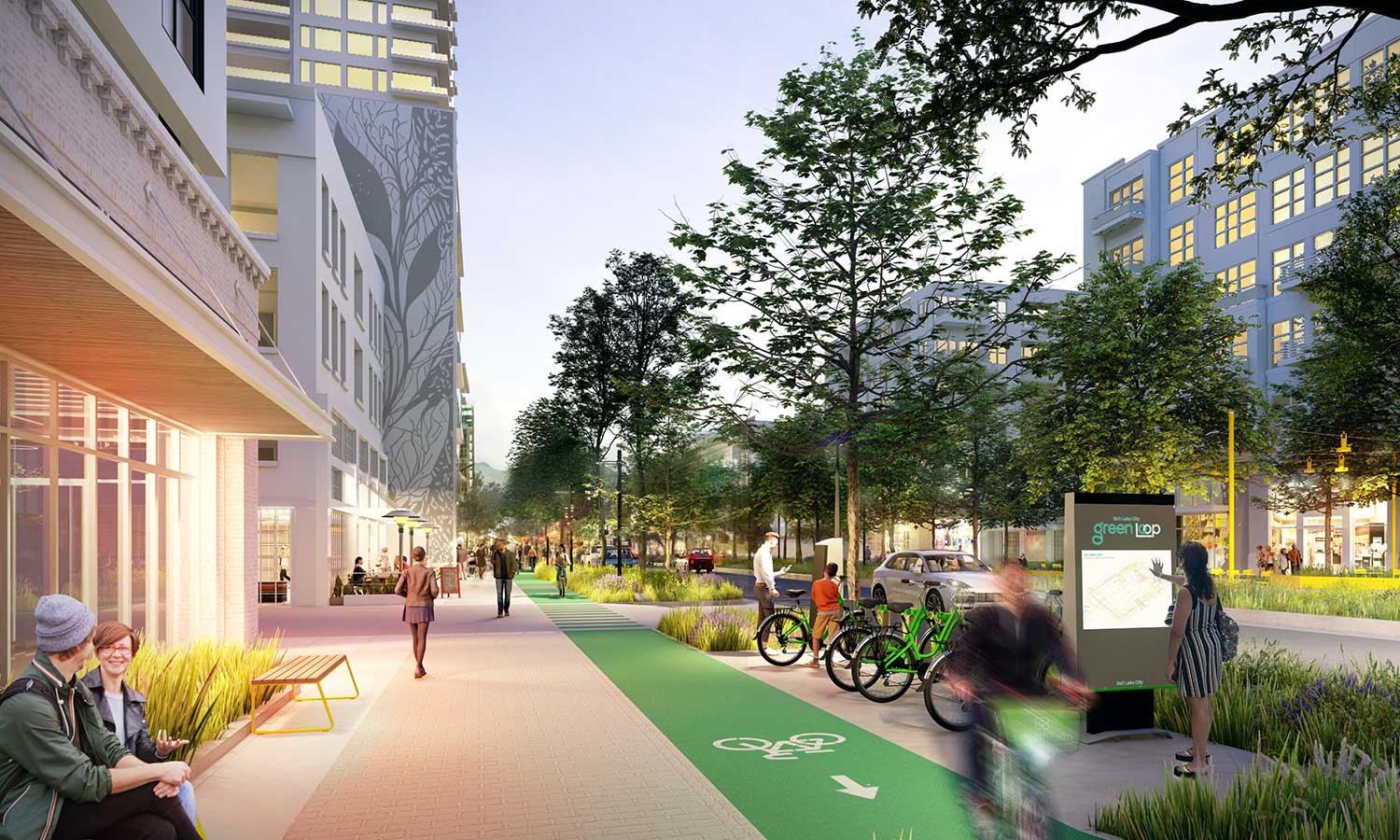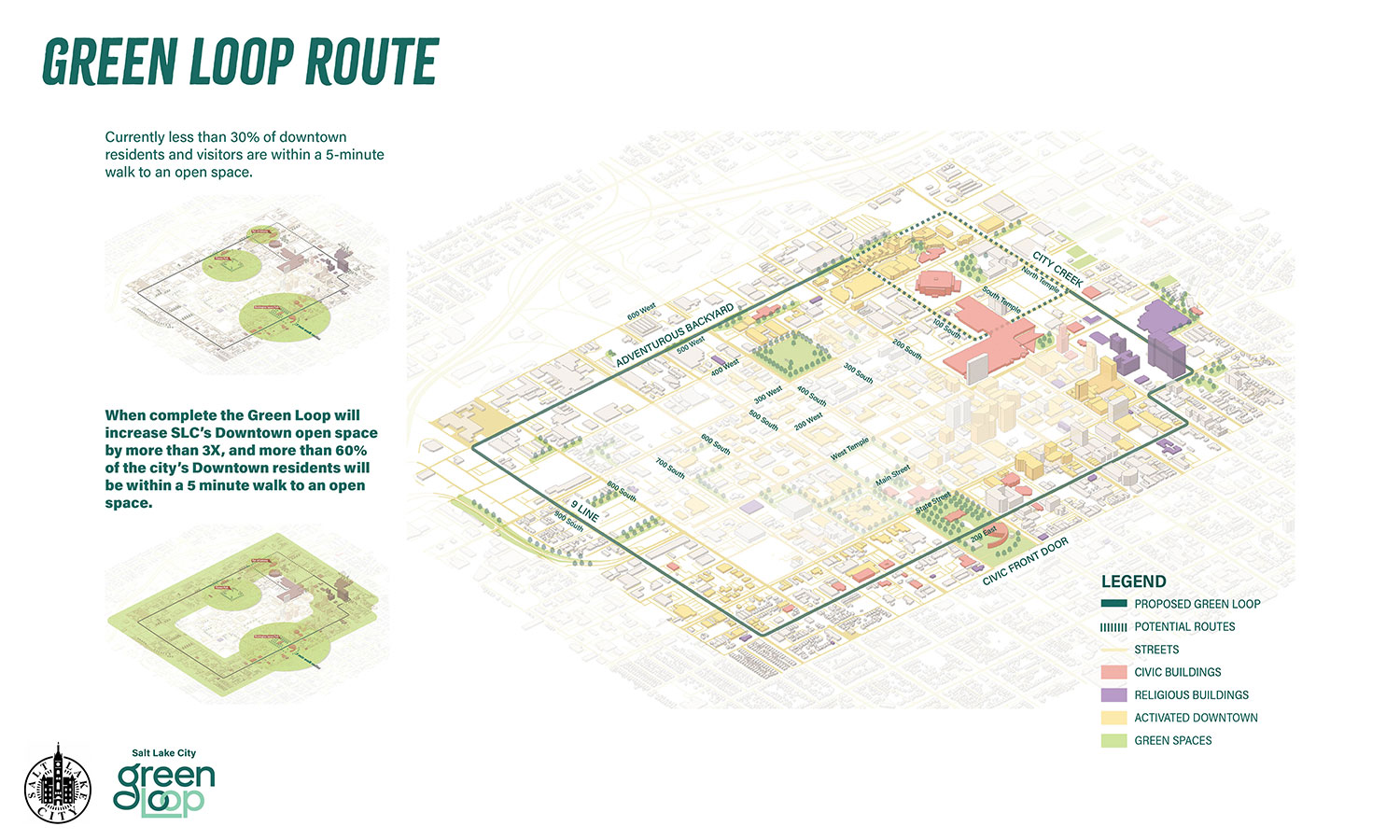The Salt Lake City Green Loop
Salt Lake City, UT
The Salt Lake City Green Loop is a 5.5 mile downtown loop that reimagines city owned streets as an active green corridor, prioritizing micro-mobility, creating an urban forest, and managing stormwater while creating opportunities for passive and active recreation.
Salt Lake City is home to one of the fastest growing downtowns in the United States. With an anticipated addition of 10,000 downtown residents by 2027, the need for improved public green spaces including diverse programmatic opportunities along with more comfortable transportation options for short trips without a car will be key to the long-term success of Salt Lake City.
Wenk Associates is currently leading a multidisciplinary team to master plan The Green Loop project which focuses on improving quality of life for people living, working, and traveling downtown by adapting the existing street space to include family friendly social spaces, trees and native planting, and comfortable options for a variety of transportation choices. Green spaces also provide critical ecosystem services and contribute to a more resilient city by managing stormwater, reducing the impacts of heat island, and improving air quality.
Actualizing these goals requires the project team to navigate complicated infrastructure and regulatory challenges. While the identified streets have excess capacity that make it possible to right-size portions of right-of-way currently dedicated to vehicular use, these roadways also act as conveyance for critical municipal infrastructural systems including stormwater, sanitary, electricity, gas, and telecommunication systems. The agencies that manage these systems have developed maintenance and operations regimes that work in tandem with the roadway, and alterations to the street itself risked significant impacts to the operations and stability of the physical infrastructure below the street. Addressing these concerns while implementing a paradigm shifting streetscape project requires the development of novel approaches, requiring meaningful engagement with City agencies throughout the design process and a focus on future-proofing both public and private infrastructure systems as part of the design process.
